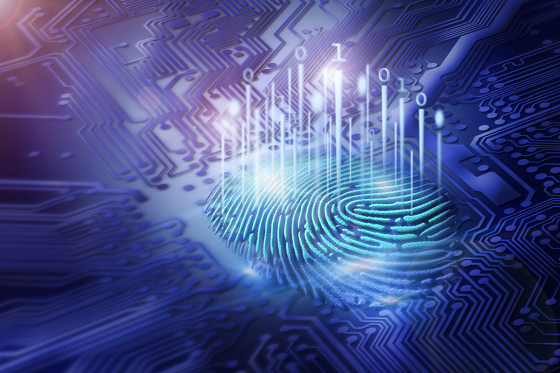In modern life, people pay more and more attention to the safety consciousness. Compared with the traditional verification methods, biometric technology has incomparable advantages. As one of the most potential technologies in the current society, what kind of situation will biometrics present in the future? Can it create new value in security and privacy?

In the current research and application fields, biometric recognition is mainly related to computer vision, image processing and pattern recognition, computer hearing, speech processing, multi-sensor technology, virtual reality, computer graphics, visualization technology, computer aided design, intelligent robot perception system and other related research. The biometric features that have been used in biometrics include hand shape, fingerprint, face shape, iris, retina, pulse, auricle, etc., and behavioral characteristics include signature, voice, button strength, etc.
Based on these features, biometric recognition technology has made great progress in the past few years. At present, the biometric recognition technologies mainly include face recognition, iris recognition, fingerprint recognition, palmprint recognition, signature recognition and voice recognition. Different biometric technologies have obvious differences in accuracy, stability, recognition speed and convenience, so they have different characteristics in different application fields.
Fingerprint identification 1
Fingerprint identification method is the earliest, the most widely used and the most mature biometric identification method. At present, fingerprint identification algorithm is mature, fast and real-time. Because of its advantages of low threshold, low cost and convenient use, it has been widely used in security, attendance, banking, mobile phone and other fields.
Fingerprint identification system is mainly composed of fingerprint image taking, preprocessing, feature extraction, comparison, system management and database management. Fingerprint image acquisition methods include optical total reflection photography, silicon crystal sensor, other technologies (ultrasonic scanning, temperature sensor, pressure sensor). The fingerprint identification method has its limitations. The fingerprint quality of manual workers whose fingers have been rubbed for a long time is very poor. In addition, there are a few people whose fingerprints have very few end points and bifurcation points, which is hardly applicable to this kind of people.
With the development of the related equipment and algorithms of fingerprint identification system, on the one hand, the related research focuses on the accuracy of fingerprint image, especially in the case of incomplete or defaced; on the other hand, it focuses on the continuous reduction of sensor scale, so that it can be applied to similar devices such as PDA and mobile phone. For example, Mitsubishi Electric Co., Ltd. of Japan has miniaturized the fingerprint authentication device and built it into the mobile phone to be launched by the company. When the user makes a phone call, the mobile phone can immediately identify whether the fingerprint is consistent with the fingerprint registered by the user in advance by touching the sensor part of the phone. If it doesn't match a previously registered fingerprint, the phone cannot be connected. This makes mobile phone users no longer have to worry about being stolen.
2 iris recognition
Iris, as an important identification feature, has the advantages of uniqueness, stability, reliability, collectability and non-invasive. Moreover, the recognition speed is fast and the recognition distance is limited. Most of them are used in industrial scenes.
Iris recognition system is composed of iris location, image preprocessing, iris feature extraction and classification recognition. The working principle of iris recognition system is that the iris image is collected by the iris acquisition device, and then the noise spots and the influence of illumination on the image are eliminated by preprocessing. According to the geometric characteristics of iris, the iris is segmented from the original iris image by locating the inner and outer edges of iris, upper eyelid and lower eyelid. The segmented iris image also needs to eliminate the influence of rotation, scale change and eyelash cover.
Further, the normalized iris image is enhanced to obtain the preprocessed image, so as to extract the corresponding features. In addition, the iris feature extraction module is related to the system, because different systems may adopt different iris features. After iris feature extraction, it is transformed into a pattern recognition problem. The classifier module classifies the features of iris. If it is iris identification, it only needs to compare with the target iris. If it is iris recognition, it needs to retrieve the corresponding database and get the final result.
Among various iris recognition algorithms, Daugman and Wildes' iris recognition algorithm based on Gabor features and coarse phase quantization and image registration technology is the most classic. Most commercial systems are based on these two algorithms.
3 face recognition
Face recognition has been active in our life. Although the accuracy of face recognition is lower than that of iris and fingerprint recognition, because of its non-invasive and the most natural and intuitive way to users, face recognition has become the most acceptable biometric recognition method. Moreover, the cost of collection is low. It is a kind of universally recognized identification feature, and it is a hot spot in the field of biometric identification at home and abroad.
Face recognition has two aspects: locating face in the input image; extracting face features for matching recognition. In the current face recognition system, the background of the image is usually controllable or nearly controllable, so face location is relatively easy to solve. However, the facial expression, position and direction are presented in the form of illumination, which makes the face feature extraction more difficult.
Palmprint recognition
Compared with fingerprint recognition, palmprint recognition is more acceptable. In addition, the essential features of palmprint are more stable and more classified than those of hand shape. Therefore, palmprint recognition should be a potential identification method.
5 retinal recognition
The retina is some very small nerves at the back of the eyeball